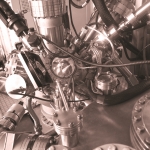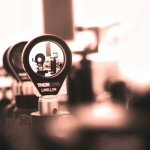Noteworthy Activities and Developments
 Implementation techniques for the molten state of polymer materials on a laboratory and semi-pilot scale (reactive extrusion, etc.)
Implementation techniques for the molten state of polymer materials on a laboratory and semi-pilot scale (reactive extrusion, etc.)- Techniques for depositing and structuring thin films (vacuum sublimation deposition, plasma deposition, ALD, 3D printing and inkjet)
- Techniques for the in-depth characterisation of molecular structures (mass spectrometry – MALDI-ToF, ESI-ToF, LC-MS (MS), HRMS, GC-MS, ion mobility – infrared spectroscopy, nuclear magnetic resonance spectroscopy, etc.)
- Techniques for characterising physical properties of materials (ellipsometry, electrical conductivity, permeation to gases, etc.)
- Mechanical and thermomechanical characterisation of materials (traction bench, DSC, TGA, DMTA, etc.)
- Surface characterisation techniques for materials (XPS, TOF-SIMS, scanning probe microscopy)
- Physicochemical and structural characterisation techniques (Rheometre, FTIR, Zetometre, Turbiscan, UV-Vis, DRX, etc.)
- Optical, morphological and mechanical characterisation techniques (2D and 3D rugosimetry, 3D digital microscopy, image analysis, macro- and microdurometres)
- Identification of metal alloys (FluoX)
 High-performance computers for the modelling of structural, optical and electronic properties of materials
High-performance computers for the modelling of structural, optical and electronic properties of materials- Ageing and corrosion tests
- Electrochemical techniques (polarisation curves, EIS, SVET, SECM, DEA)
- Gas analysers
- Diagnosis of plasmas by energy- and time-resolved mass spectrometry, LIF (Laser Induced Fluorescence), electrostatic probe, absorption and optical emission, etc.
